































































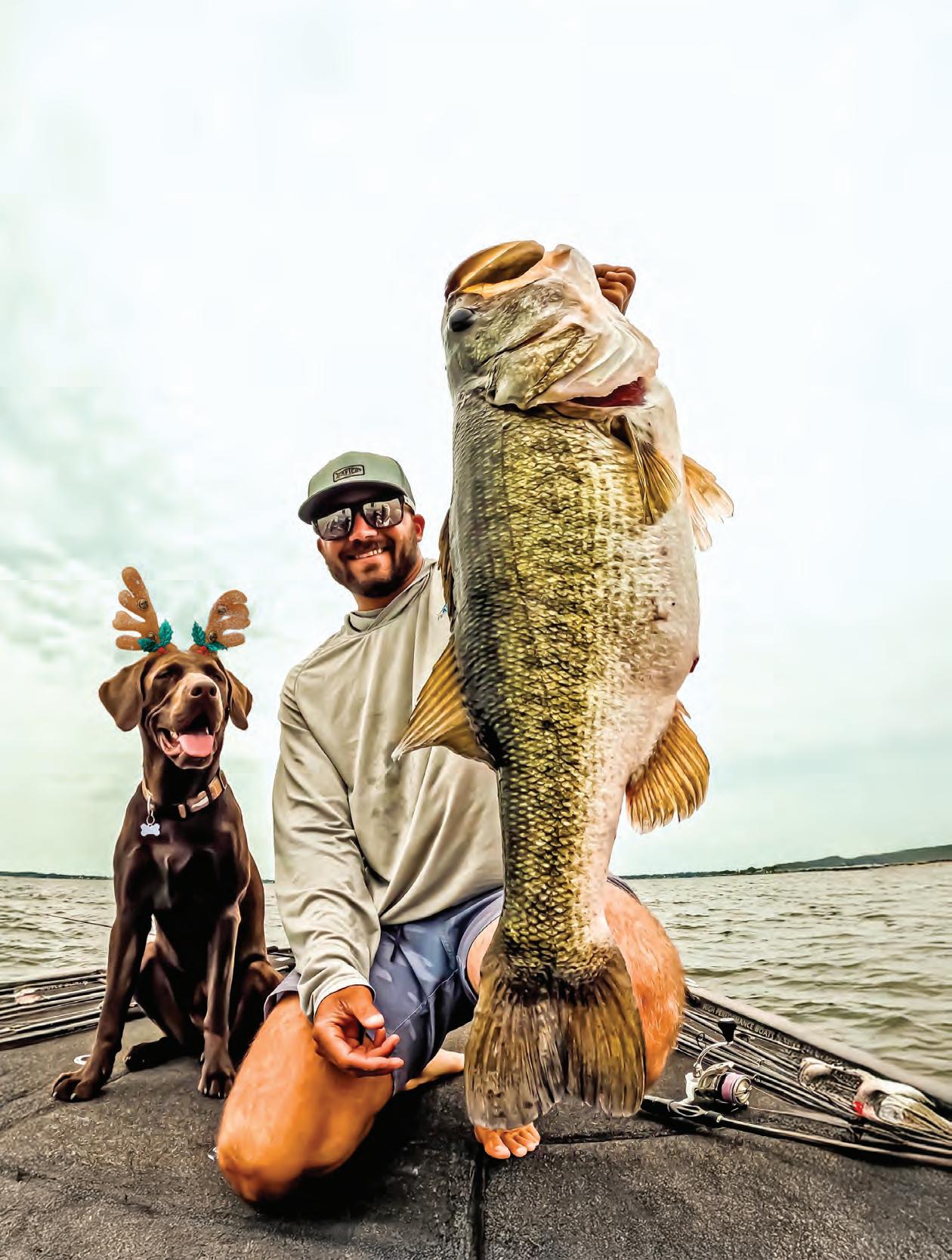










































































































Ever see a commercial harbor full of Furuno Marine Electronics and wonder why the pros rely on us?


See why here










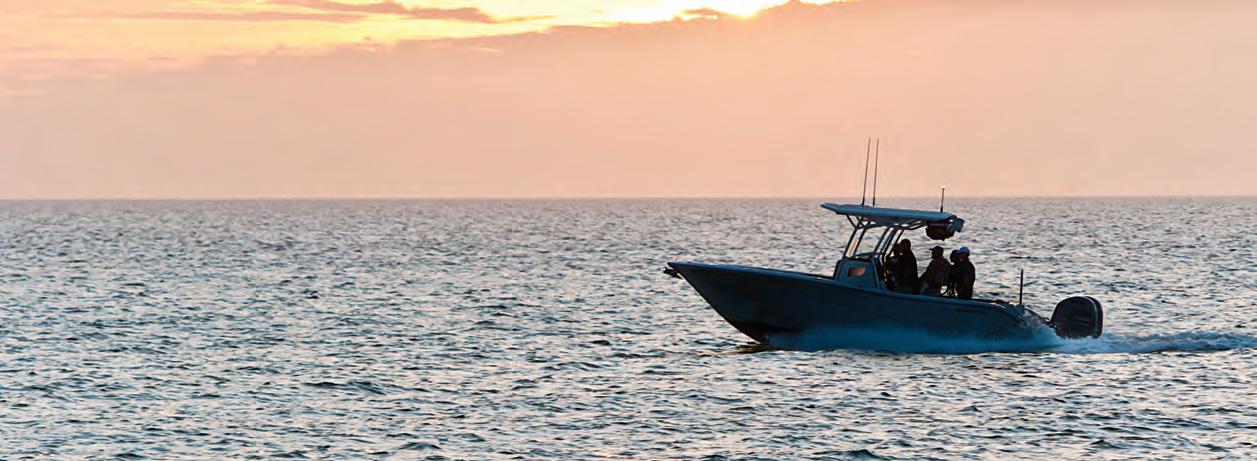
Are you ready to embark on your next on-water adventure? Before you set sail, here are fve things to know about boat insurance.
1. Boat insurance isn’t just for accidents
With comprehensive coverage, you’ll also be protected fnancially for theft, vandalism, and unexpected events like storms if you need repairs or replacements due to damage.
2. Accidents can happen to anyone
When accidents happen, boat insurance offers liability coverage for damages or injuries you cause while boating, up to specifed limits. It can also cover lawsuit costs if you’re sued.
3. Boat insurance can cover medical payments
Boat insurance offers a range of optional medical payments coverage limits, helping to cover medical expenses if you’re in an accident or someone is hurt on your boat, regardless of fault.
4. Most lenders require boat insurance
If you fnanced your boat, you’ll likely need boat insurance since most lenders require boat insurance to protect their investment. Additionally, some marinas or municipalities require proof of insurance for docking.
5. Progressive offers specialized boat coverages
Ever worry about getting stuck on the water?
Progressive’s Sign & Glide® On-Water Towing coverage** can help. It’s an additional coverage that steps in if your boat is disabled or breaks down on the water, paying for on-water towing, jump starts, soft ungroundings, and fuel delivery. Fuel cost isn’t included.
Don’t let unforeseen circumstances disrupt your voyage. Cruise with confdence thanks to Progressive Boat insurance. Because when it comes to your boat, peace of mind is the ultimate luxury.
Scan to get a quote in as little as 4 minutes.
to learn more.




















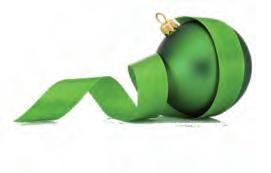
Reel in the Perfect Holiday Gifts for Anglers and Outdoor Enthusiasts!
The holiday season is upon us, and what better way to celebrate than by showing the anglers and outdoor enthusiasts in your life that you truly understand their passion? Finding the right gift can feel as tricky as reeling in a trophy fsh, but fear not! We’ve got some fantastic ideas that will have them casting their lines with glee.


As the holiday season rolls around, remember that the best gifts come from the heart. Whether it’s a high-tech fshing gadget, some fshing apparel or even a new boat or motor, these thoughtful presents are sure to delight the anglers and outdoor enthusiasts in your life. So, cast your line into the sea of gift ideas...you’re bound to reel in something special!










Depending on where you live, December could be the last month for all grouper harvest. I think red and black grouper will still be available in Florida’s East Coast, while red and scamp grouper will be available in Georgia and the Carolinas. !is is when the bite is the best. I’ve always said that the week of Christmas is the apex of grouper shing and I’ll stand by that statement. !e month of November was on re here in the Carolinas. Even though we can’t keep gag, grouper and American red snapper have been plentiful. !e good news is the light line has been working well.
!e key to nding good bait is a tackle shop that keeps beautiful, frozen cigar minnows and sardines. !ese baits are the ticket to good bottom bites and the light line going o . Needless to say, live cigars and live sardines are extremely e ective on the light line and under the kite, but frozen ones work well also. Live menhaden and pin sh are always a smart play to have in the live well before heading o shore. If you nd live cigar minnows and live sardines, all the better, but if you don’t, at least you have those two for live baits on the bottom and for the light line.
A live sardine or a live cigar on the correct jig has a life expectancy of just a few seconds. !is is where it pays o to nd a shop that carries beautiful (frozen) bait. When you open up a box of frozen cigar minnows and see beautiful, clear eyes and yellow on the tails you’ve got a box of bites in your hands. If you have a frozen box of cloudy-eyed, mushy cigar minnows, then you might not nd what you’re looking for on the bottom or on the light line. If you nd large schools of cigars or sardines, it o en pays to spend a little bit of time to catch them. !is always results in bites, whereas the frozen minnows work most of the time.

!e Sabiki can be the most valuable player of all. Just like you use a dehooker to remove your grouper and snapper from the hook, use a dehooker to remove your cigar, minnows and sardines from the Sabiki hook. !is keeps those small needles and sharp hooks out of your hands and it’s better for the minnows and the live well not to handle them with your hands.
Don’t be surprised if you catch these sh in extremely shallow water this month. !e 66- to 68-degree temperature break can be magical this month for the light line. No telling what you’ll catch. Everything can be there, from kings to wahoo and everything in between.
I said all that to say this: Get out there with some pretty bait and go harvesting some good dinners!
See more from Tim Barefoot at www.barefootcatsandtackle.com and on YouTube @timbarefoot5698.


Stationed strategically around the East Coast, all Suzuki RePower Centers have achieved the highest level of Suzuki certifcations to meet and exceed your repower needs.
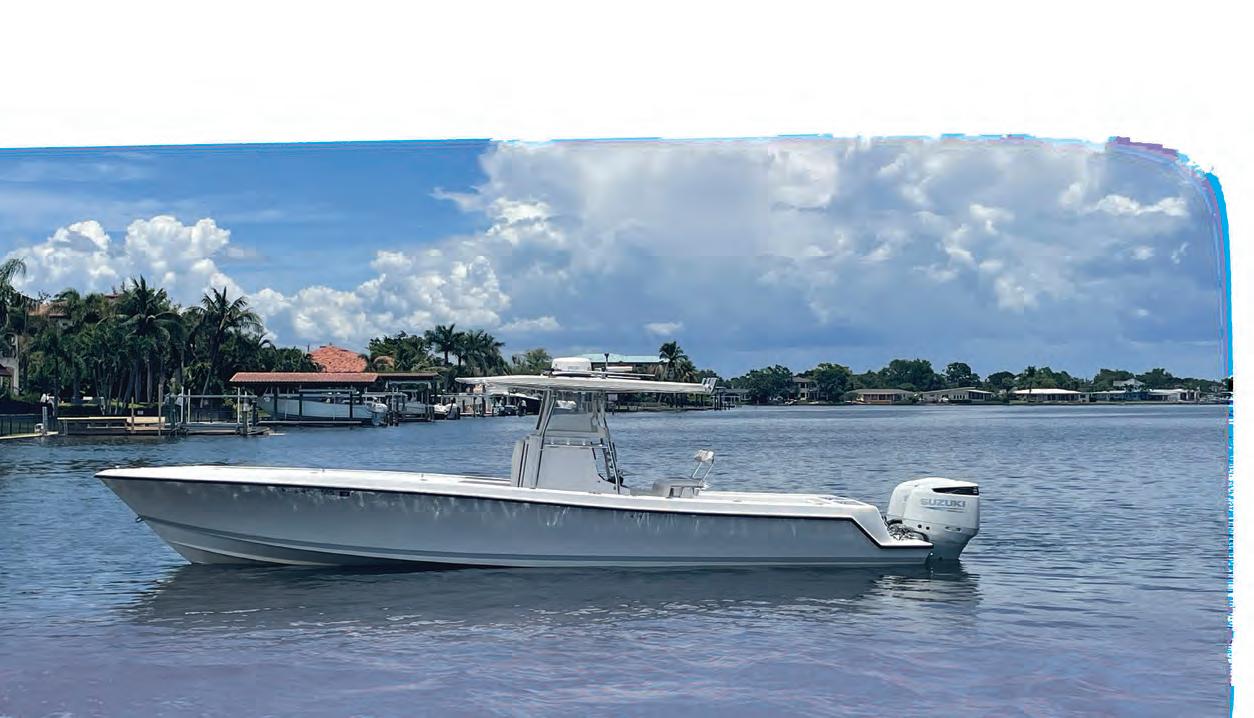
Mastry Engine Center has received the Suzuki Marine Super Service Award and has been ranked #1 in Suzuki Marine US Sales! 60 YEARS OF REPOWER EXPERIENCE!

RePower Packages designed to best ft your needs and not stretch your budget. Financing available.

Rest assured, all Mastry Suzuki RePowers are backed by Suzuki’s industry leading 5-year factory warranty.

When Considering A Repower, Consider These Factors:
•Every Authorized Mastry Suzuki RePower Center has decades of repower experience providing proper rigging, controls, propeller matching and in water testing
•With a Mastry Suzuki RePower, owners gain improved performance, less noise and greater reliability
•Mastry Suzuki RePower’s exclusive Owner’s Edge Program*
•Mastry Suzuki RePower Centers use authentic Suzuki OEM parts and have factory certifed technicians


Since 2014, Mastry Engine Center, has been building the premiere Suzuki Outboard repower network in Florida. Today, Authorized Mastry Suzuki Outboard Centers have been exceeding expectaions in the Southeast for over two decades. Recently Suzuki Marine requested Mastry Engine Center to expand the network throughout the Northeast. Now boat owners from Maine to Florida can be assured of the best support for their Suzuki outboard repower project. All Authorized Mastry Suzuki RePower Centers provide the best options, information and package pricing for excellent performance in repower.





When you purchase a new Suzuki outboard from an authorized Mastry RePower Center you qualify to become a member of the Mastry Suzuki Owner’s Edge. Owners receive an identifcation card that provides them with important information about their Suzuki outboard motor as well as a passport to additional benefts during ownership. Members enjoy a detailed engine maintenance schedule, Mastry Suzuki RePower Trade Program and special pricing from Mastry Suzuki Partners



NONE OF THE DEAD WEIGHT, ALL OF THE TORQUE.
Suzuki Marine USA’s DF6A revolutionizes portable outboards with unparalleled four-stroke performance and e ciency. Compact and lightweight, the DF6A is easy to transport and delivers surprising low- and mid- range torque for quick acceleration.
Random drawing to be held 12/19/25. Winner will be announced on Facebook. Winner will be notifed by email • Please allow up to 90 days for delivery. TO ENTER, SCAN THE CODE OR VISIT:

If you’ve ever dreamed of hauling in a barn door halibut or tangling with ferocious Paci!c cod in one of the most scenic places on earth, then May is your month to come !shing in Ketchikan, Alaska! e bottom !shing for halibut and cod in May is nothing short of incredible. Paci!c cod by the thousands swarm underwater sand ats and lurking halibut feed on massive bait balls of herring. It is truly is a wild undertaking below based on the amount of life ourishing. It’s primetime for steady actions, freezer!lling fun and unforgettable memories on the water.


One of the best parts about !shing in Ketchikan is just how easy it is to get to this !shing Mecca. Ketchikan services daily ights from all major cities. Just a quick layover in Seattle and your landing in Ketchikan’s international airport the very same day.
Ketchikan’s Finest Fishing Charters makes your trip e ortless from start to !nish. eir multi-day allinclusive packages cover everything: lodging, airport transfer, meals, !shing and !sh processing. In turn, all you have to think about is setting the hook and enjoying the day.
Whether it’s your !rst time !shing Alaska or you’re a seasoned angler chasing your personal best halibut, May in Ketchikan delivers. Nothing beats bottom !shing in Alaska’s !rst city when the bite is on! Book now and join us this spring. is trip makes an amazing holiday gi they will cherish forever.
Visit ketchikan shingtrips.com to learn more.



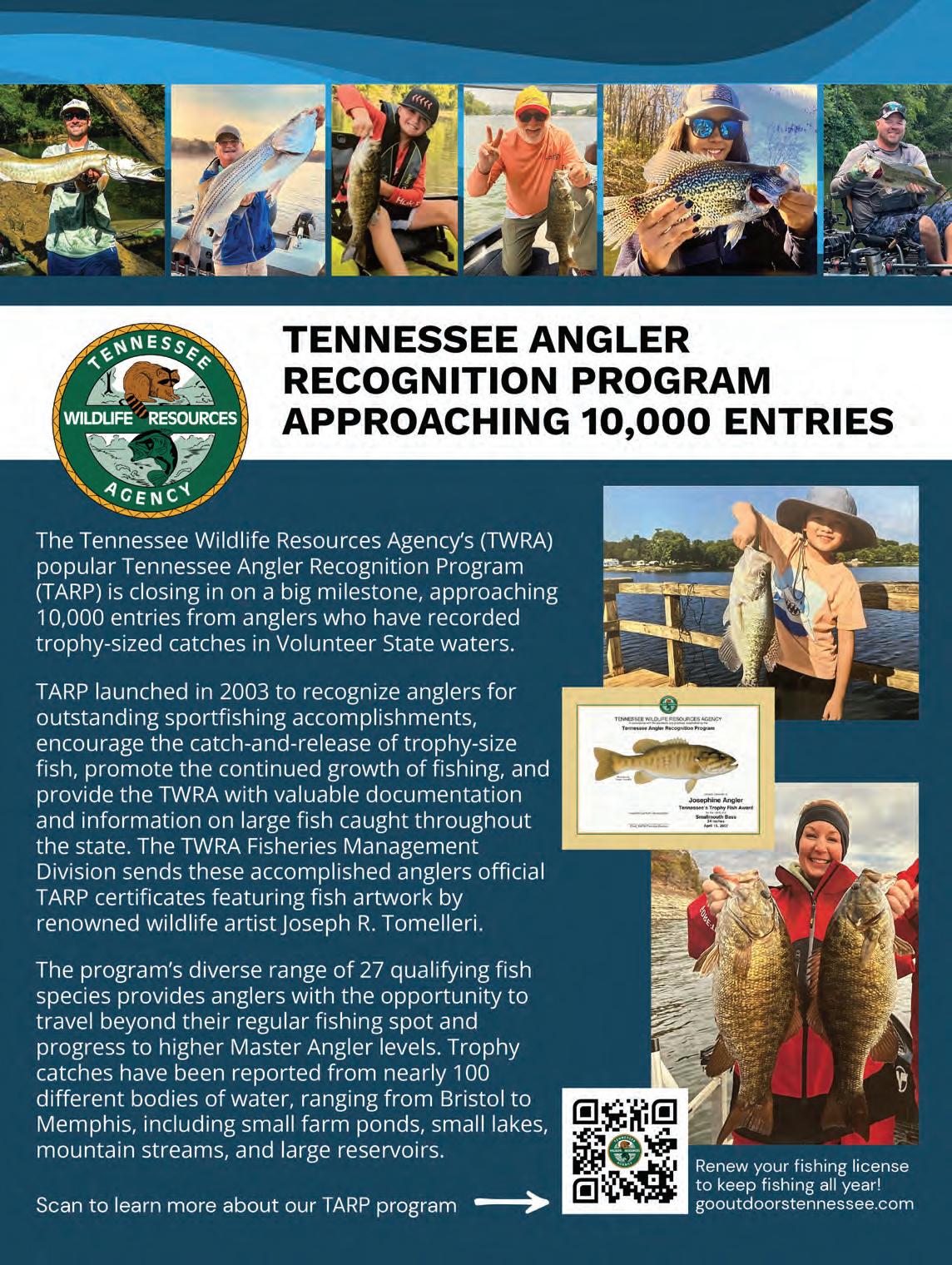
By Jim Mize
Acouple days ago, I fished with a Lab. No, not as bait; he went with me. Dogs and fishing go together like donuts and dieters; you know better, but you do it anyway.
Most people think of dogs as hunting companions rather than fishing partners. Maybe that’s because dogs can’t back a trailer, or, at least, the cost of teaching them that trick can be excessive. Also, when hunting, dogs have a specific role; namely, they go get what you shot. It makes you wonder if when you take your dog fishing, you should at least take turns reeling in the fish.
Every dog does something different on fishing trips. Some run around the boat constantly keeping an eye on things. Others fall asleep in a warm spot. Mine sits and keeps looking at me expectantly with an expression that says, “So, when you gonna catch something?” He can be impatient at times.

Fishing with a dog in a boat can be simple enough, but fishing streams with a dog can take some planning. For example, if you’re waist-deep in a stream, you either have to train your dog to sit on the bank or he will be doing a lot of dog paddling. Which is good for the exercise, but at some point he gets tired and tries to climb into your waders.

Our guides can help the most experienced fly fisherman have a trip to remember or turn a beginner into a lifelong fly fishing enthusiast.
But there are a lot of good reasons to take your dog fishing. For example, if you have a dog along, you can shoot some good photos even when you catch no fish. This might explain why I have a lot of dog photos. Another reason to bring a dog is to have a witness who won’t talk. There’s something nice about holding up a fish and not being challenged about your guess of its weight or length, or who later corrects your story.
Dogs also make good company to and from the river. They tend to like the same music as you, or at least, don’t ask you to change the station. Also, whenever you decide to fish is fine with them. They’re just happy to go.
I mean, when was the last time your fishing buddy rolled the window down and stuck his head out? Besides that one time when he was hungover.
It’s easy to spot the vehicle that goes with a fishing dog. It’s not the hair on the seats or the mud in the carpet that gives it away. It’s the drool on the windows. I don’t know what my truck windows taste like, but I guarantee my Lab does.
In fact, after watching my Lab over the years, I’ve concluded he only has two moods: happy and asleep. Even when he barks at something he



seems to enjoy it. On the other hand, dogs have a few habits that can make fishing with them difficult. A problem with retrievers, for instance, is that they retrieve. And it’s hard to get mad at them when they do. On our last trip, we hit the trifecta with a shoe, a dead snake, and a dirty diaper. The most irritating part is that normally I would have caught the shoe.
Also, dogs would tell on you if they could talk. They can’t even get away with the things they did. For example, if the leg gets chewed off a chair or you see teeth marks in a fine bamboo fly rod, everyone suspects the dog. Sure, he probably did it, but where’s the “innocent until proven guilty” principle now? Another dog habit that’s annoying is that a wet dog can’t help but shake. It’s his way of saying, “Hey y’all, watch this! “I wonder if wet dogs shake when there’s no one else there. It’s a lot like that philosophical question about a tree falling in the woods and whether it made a sound. Just for the record, when that tree fell, my dog was nowhere near it. Honest.
Another thing about fishing dogs is that they tend to ride home wet. This is an inevitable conclusion to the trip. A wet dog. And wet dogs have their own unique smell, widely known as “wet dog smell.” Let me tell you, as cute as puppies are, if this were a good smell the leading perfume in the world would be “Eau de Wet Dog” with a soggy puppy on the front of the bottle. But instead, you get an odor that lingers even after the water is gone. Or maybe it was that dirty-diaper retrieve.
One thing dogs don’t understand, however, is catch-and-release. If you want to irritate your dog, show him a fish and let it go. All along, he thought it was going to be his. Otherwise, what’s he there for? I have heard of dogs that will stick their heads underwater and grab fish. I’m not sure I want one of those. I mean, who wants to get beat fishing by their dog? Not only that, but how long before he starts fishing without me? And does he expect me to sit quietly for one of his fish tales?
If you’re a single fisherman, I will share a secret. Girls dig dogs. This helps a lot if you’ve been fishing for a week and are grungier than a fire pit. But not everyone is a dog person. And my dog seems to like them best, or at least, jump on them the most. Maybe that’s why they don’t like dogs.

Also, a few other people may not appreciate your dog. For example, if you stumble upon a bunch of skinny-dippers and your dog retrieves a few items to see if they are yours, you won’t necessarily be rewarded even if you bring them back. Some people are funny that way.
The good news is that dogs can do a lot of things wrong and get away with them. That’s something I could never pull off. For example, my Lab can track mud anywhere and with one big grin he’s forgiven. I need to learn that grin.
All in all, dogs can make entertaining fishing companions. The only advice I’d offer is that should your dog stumble upon some skinnydippers, teach him to bring back something besides their shoes.
“Fishing With Dogs” is an excerpt from Jim’s award-winning book, A Creek Trickles Through It. You can find the book online or order autographed copies at www.acreektricklesthroughit.com. Email: jimmize1@cs.com
Award-winning author, Jim Mize, has written a humorous book specifically for fly fishermen. Titled, A Creek Trickles Through It, this collection delves into such topics as carnivorous trees, persnickety trout, and the dangers of fly-tying. This book was awarded first place in the Southeastern Outdoor Press Association’s Excellence in Craft competition. Whether you are an arm-chair fisherman or one with wellearned leaky waders, it will be a welcome addition to your fishing library.
Jim has received over one hundred Excellence-In-Craft awards including one for each of his other books including The Winter of Our Discount Tent, Fishing With Beanpole, Hunting With Beanpole, and The Jon Boat Years. His articles have appeared in Gray’s Sporting Journal, Fly Fisherman Magazine, Fly Fishing & Tying Journal, as well as many conservation publications. You may order copies through Amazon or get autographed copies from his website at www.acreektricklesthroughit.com

Provided by Captain Jim Durham, Owner StriperFun Guide Service, Tennessee and Kentucky Walleye, Bass, Crappie and Muskie Charters, Superbaittanks.com, Captain Jim Marine Electronics and much more……
DATE OF REPORT: December 2025
Greetings to my readers! I hope that the world finds you and your family doing well! COME VISIT BEAUTIFUL THE BEAUTIFUL CUMBERLAND RIVER FOR FABULOUS WINTERTIME FISHING TRIPS – CALL EARLY WHILE WE STILL HAVE DATES AVAILABLE!
MONSTER TROUT FISHING BELOW THE LAKE CUMBERLAND DAM!
Captain Jim Fishing offers trout charters December through April below the Lake Cumberland Wolf Creek Dam in Kentucky! This type of fishing is both “drift fishing,” jigging bait (for huge rainbow and brown trout up to 13 pounds!) and casting small lures on ultralight rods and reels to catch “schooling,” smaller rainbows (1 to 3 pounders). You will love this new and exciting type of fishing!
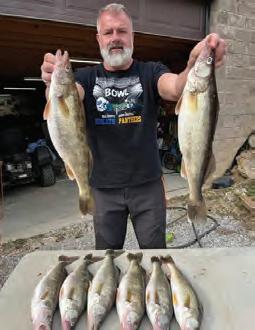
for striper, walleye and sauger on the Cumberland River near Gainesboro, Tennessee all winter long – December running through the end of March! The beautiful flowing waters of the Cumberland River is loaded full of big fish. The Cumberland River is a world class striper, sauger and walleye destination (fishing for 2 people only on the Cumberland River)!
We also offer walleye charters on the Holston River in Eastern TN. The fishing for the Holston River begins December 15, running through the end of March! Be sure to book your December through March striper, walleye and sauger trips on the Cumberland River and walleye trips on the Holston River in Eastern TN! You are really going to love this exciting way to fish these beautiful rivers!
It is great to be alive and be a “free” American! I look forward to seeing all of you this year on the water. Always remember to stop and shake the hand of a person in uniform or wearing garb that shows they are a veteran! Their service is why you speak English, can vote and can enjoy the freedoms you do! Until next time, blue skies and tight lines!

CUMBERLAND RIVER STRIPER, WALLEYE AND SAUGER – HOLSTON RIVER WALLEYE
Striperfun AND Tennessee Walleye Charters stays busy fishing
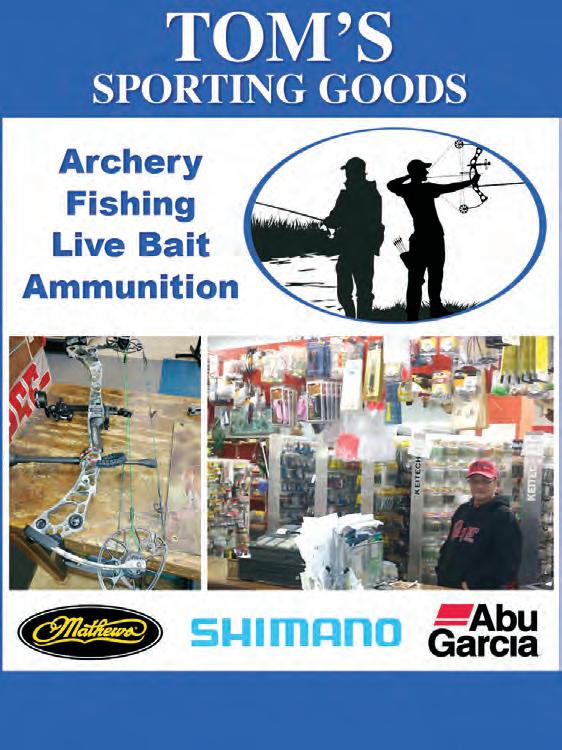
With full State licensing and insurance, all Captain Jim’s Guide Service guides (19 guides on 18 waterways) can take you on a safe, fun and unforgettable fishing adventure! Check out all of our fishing services as well as our exclusive “online” store at www.striperfun.com or call 931-403-2501 to make reservations today.
Hope your Christmas is filled with big smiles, bold bites, and plenty of time on the water. And may your heart be filled with peace and joy. Merry Christmas, Anglers! From all of us at The Angler Magazine, Great Smoky Mountains & The Upstate






By Matt Mittan
It’s been just over a year since Hurricane Helene tore through our region, and through the community of Swannanoa Valley that I have called home for nearly 30 years. It’s been just over a year since the creeks and rivers I knew by heart carved new channels, washing away the paths and formerly sturdy banks that I have walked through half my life.
The flood took away a lot more than homes and roads. It stripped away the familiar rhythms that had become part of who I am, part of the history I had created with my now grown children, and turned places that had been the center of laughs and memories with friends into places of terrible loss of life and traumatic violence at the hands of Mother Earth. Because those natural places were the cornerstone of my reflection, rejuvenation and inspiration - I have spent the past year trying to find a new balance with nature and within myself.
In those first months, I didn’t have words. Every trip down the road felt like passing through a ghost story, where the faces of friends I lost
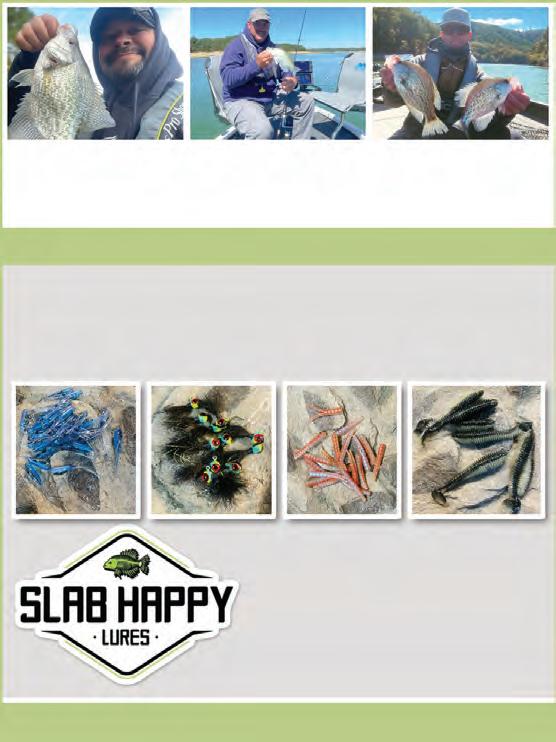


would stare into my soul. The mud, debris and broken timber hid feared findings that I never wanted to risk finding. So... I set my pen down, thinking maybe silence was the only honest thing to offer for a while.
But seasons don’t ask our permission to keep moving. They roll on, unmoved by our human deliberations. As spring grew into summer and summer faded into fall, something subtle began to stir within me. I noticed patches of green poking through the raw gravel bars where forests used to be. Some animals started to emerge from the shredded forests and quiet eddies that had formed below new shelves of stone welcoming birds to bathe and drink. The songs of songbirds had returned, tentative at first — like they, too, were testing whether it was safe to sing again. I rejoice in their presence, splashed with a taste of grief because there are still so many scars to remind us of the losses we’ve endured. I suppose that’s how it will be for a while.
It’s easy to long for what was. For the old routines, the same bends and shoals, the comfort of things we thought were permanent. The reliable fishing holes that took us years to find, and then perfect our approach. But maybe permanence was never the point. Maybe rivers and storms are just reminders that life itself is a moving body, reshaping, redirecting, finding new courses when the old ones are blocked—sometimes violently.
When you cut to the chase, it now falls on our hearts to decide how we adjust, or not, to those realities. It’s only been the past couple months that I have started to move on from the natural losses of the storm. That doesn’t mean I don’t still feel the losses. It means I’m focused on what comes next, not what was.
I see it in my neighbors too. Folks rebuilding homes on higher ground. Businesses who have survived, making the adjustments that the times




n late September 2024, Hurricane Helene damaged roads, trails, foot bridges, and historic buildings of the Cataloochee Valley in the Great Smoky Mountains National Park (GSMNP). The valley did not open to visitors until April 2025 and the valley road remains closed past the horse camp entrance as much of it was washed away leaving deep holes in many places. Rough Fork flows along this road and the damage will take a while to repair. Trails, the campground and most backcountry campsites reopened by summer, and Cove Creek Road that visitors take to enter the valley is in great shape.
As part of a long-term monitoring project, GSMNP Fishery Program staff, seasonal interns that Trout Unlimited (TU) chapters in TN and NC help fund, and TU volunteers annually sample 43 sites across 24 streams in the park to evaluate trout populations and ecological health of aquatic communities. In July 2005, volunteers from the Pisgah and Land O’ Sky chapters helped sample streams within Cataloochee Valley (see map).
Streams were sampled using a standardized protocol to collect fish from a 100-m section blocked off by nets to contain all fish in the section. Depending on stream width, 1 - 3 backpack electrofishing devices that generate high voltage are used to apply electrical current into the water to temporarily stun fish allowing technicians to collect them with dip
nets. Each section is sampled three times which provides an estimate of the total number of fish in the section. Scientists with the University of Tennessee assisted with sampling and collected salamanders that were also stunned during electrofishing.
ROUGH FORK (elevation–2,700 feet, just upstream of the Caldwell House), had a sympatric mix of rainbow, brown, and brook trout. Although high flows changed the stream bed considerably, trout abundance was similar to past years with good numbers of young-of-theyear (YOY). Pretty Hollow Creek (elevation–3,500 feet, 800 feet above Rough Fork) had a mix of rainbow and brook trout. High flows changed channel morphometry, but bank erosion, tree loss, and sedimentation were minimal. YOY brook trout were abundant. Onion Bed Branch (a tributary of Pretty Hollow Creek at 4,200 feet elevation) had a high abundance of brook trout. High elevation streams typically support only brook trout (allopatry). High flows caused minor changes in some stream habitat. Throughout the valley, the worst impacts occurring where the loss of riparian vegetation next to roads and trails resulted in high erosion of stream banks.
GSMNP Fishery Supervisor Matt Kulp said that many of the streams



his crew sampled so far this summer reflect abundance similar to preHelene levels with good brook and brown trout reproduction during fall 2024 soon after Helene, and strong rainbow trout reproduction during spring 2025. He said larger trout were less abundant in some streams, perhaps a result from high flows. High numbers of YOY fish reflects the resilience of trout to high water conditions.
CATALOOCHEE CREEK (elevation–2,400 feet) was sampled by the USGS gaging station to measure the Index of Biotic Integrity (IBI), adding to a database that estimates long-term fish population trends, and enables comparisons between other streams in the park and across the Blue Ridge ecosystem. IBI is a numerical expression based on species composition, richness, and diversity, and the absence/presence of native and non-native species intolerant to various water quality parameters. Despite the presence of non-native trout, this section of the creek reflected excellent ecological health, and showed no impacts due to Helene.
Several streams in the valley have been restored to remove rainbow and brown trout followed by stocking Southern Appalachian Brook Trout. Streams selected for restoration have a waterfall, cascade, or historic mill dam sufficient to prevent migration of non-native trout from downstream, high-quality habitat, and acidity levels tolerable to brook trout. Winding Stair Branch (elevation–2,700 feet) was restored in 2001 and this summer, brook trout were collected to remove a small section of adipose fin for genetic analysis. Understanding which brook trout donor stocks resulted in successful re-introduction informs future restoration projects. Advanced genetic analysis may also allow scientists to understand which genetic attributes (alleles) provide sufficient fitness to increase genetic diversity, sustain effective population levels, and allow adaptation as the climate warms.
The North Carolina Wildlife Resources Commission (NCWRC) also conducted sampling last summer to evaluate the effects of Helene on wild trout populations across Western North Carolina. Jake Rash, Coldwater Research Coordinator with the NCWRC, reported that his team of fisheries
NEW ROOTS continued from page 6
require. Farmers prepping new crops in fields that flooded. Volunteer crews clearing debris from waterways and replanting streambanks. There’s grief, and there will be for a generation to come. But there’s also hope, perseverance and grit.
I would argue that grace for each other, grace for ourselves, grace for this land, and remembrance for those that we lost are the cornerstones of what allows us to reshape, redirect, and find new courses as individuals and as a community. We are not severed from this land, we are a part of it. We too will grow new roots.
Matt Mittan is owner of Serenity Outdoors Guide Service and Owner of BizRadio.US. He also co-Hosts Matt & Michele Outdoors, an outdoor themed travel radio show. Learn more at MattMittan.com


biologists conducted 255 samples of over 130 streams and documented trout presence in most streams although abundance may have declined in some. Jake asked TU chapters to help educate the angling public to not attempt to improve trout populations by moving fish from stream to stream. This practice is more common than you might think, and could harm fish populations by transporting diseases, parasites, and aquatic
Continued, see POST

Page 10

invasive species. Illegal fish transfers may introduce rainbow and/or brown trout into allopatric brook trout waters, or waters slated for native brook trout restoration, which involves considerable planning and effort by NCWRC, their partners, and volunteers.
Jake also said that flood-related impacts to stream habitat may affect trout reproduction and survival to adulthood (recruitment). Impacts on streams and their habitats are varied across the mountains, so future fish sampling will be designed to evaluate the recovery of trout populations after Helene. Jake’s early assessment parallels what many guides are saying:
“The fish are there, maybe down in abundance in some streams, but don’t expect your favorite areas to fish the same as before Helene.”
This summer’s intensive river clean-up activities to remove debris, including downed trees, caused a great amount of concern among guides, riverkeepers, anglers, biologists, and other advocates for healthy rivers. The operation of heavy equipment along river bottoms and apparent disregard to protect stream bank habitat and pre-existing “legacy” woody habitat were reported in many rivers and streams that supported not only trout and other fish, but protected hellbenders and endangered mussel species. The long-term impacts of these debris removal operations have yet to be fully evaluated.


Battery-powered electrofishing devices generated 700 volts to send a few amperes of electricity to stun fish. Three passes are made over a 100-m section of stream.






MOREHEAD CITY – New fishing reporting requirements are just a month away — beginning Dec. 1 — and North Carolina’s two fisheries management agencies continue efforts to get the word out, as the requirements impact both commercial and recreational fishermen.
“Division of Marine Fisheries staff have been working diligently to prepare for implementation of this new requirement, developing electronic resources, distributing information, and speaking faceto-face with those impacted,” said N.C. Division of Marine Fisheries Director Kathy Rawls.
Those who fish recreationally must report any flounder, Red Drum, Striped Bass, Spotted Seatrout (speckled trout), and Weakfish (gray trout) that they catch and keep to the N.C. Division of Marine Fisheries. The harvest should be reported electronically through an online webform or a soon-to-be released iPhone app (an Android app is under development and will be released later).

“The Wildlife Resources Commission supports the Division of Marine Fisheries mandatory harvest reporting efforts,” said North Carolina Wildlife Resources Commission Inland Fisheries Chief Corey Oakley. “Harvest reporting for the listed species is required in
waters upstream of coastal fishing waters (see interactive map). Reporting is required in waters as far inland as Chatham and Wake counties. This reporting should help fisheries managers better understand harvest rates among recreational and commercial fisherman for those required species.”
Commercial fishermen will continue to report harvest they sell through a North Carolina Trip Ticket Program licensed seafood dealer. However, with this new requirement, they also must report any finfish, shellfish, and crustacean that is kept, but not sold, through a seafood dealer.
The reporting requirements apply to Coastal Fishing Waters, Joint Fishing Waters, and Inland Fishing Waters adjacent to Coastal and Joint Fishing Waters. More information can be found on the Mandatory Harvest Reporting webpage. The N.C. General Assembly amended a law (G.S. 113-170.3) in 2023 to require the additional reporting measures. Information collected under these new reporting requirements will be used in conjunction with the existing data collection programs to enhance fisheries management.

If you love the outdoors and dream of being in business for yourself–but not by yourself, now is the perfect time to make a change and choose a Coastal Angler or The Angler Magazine Franchise.


woody@theanglermagazine.com


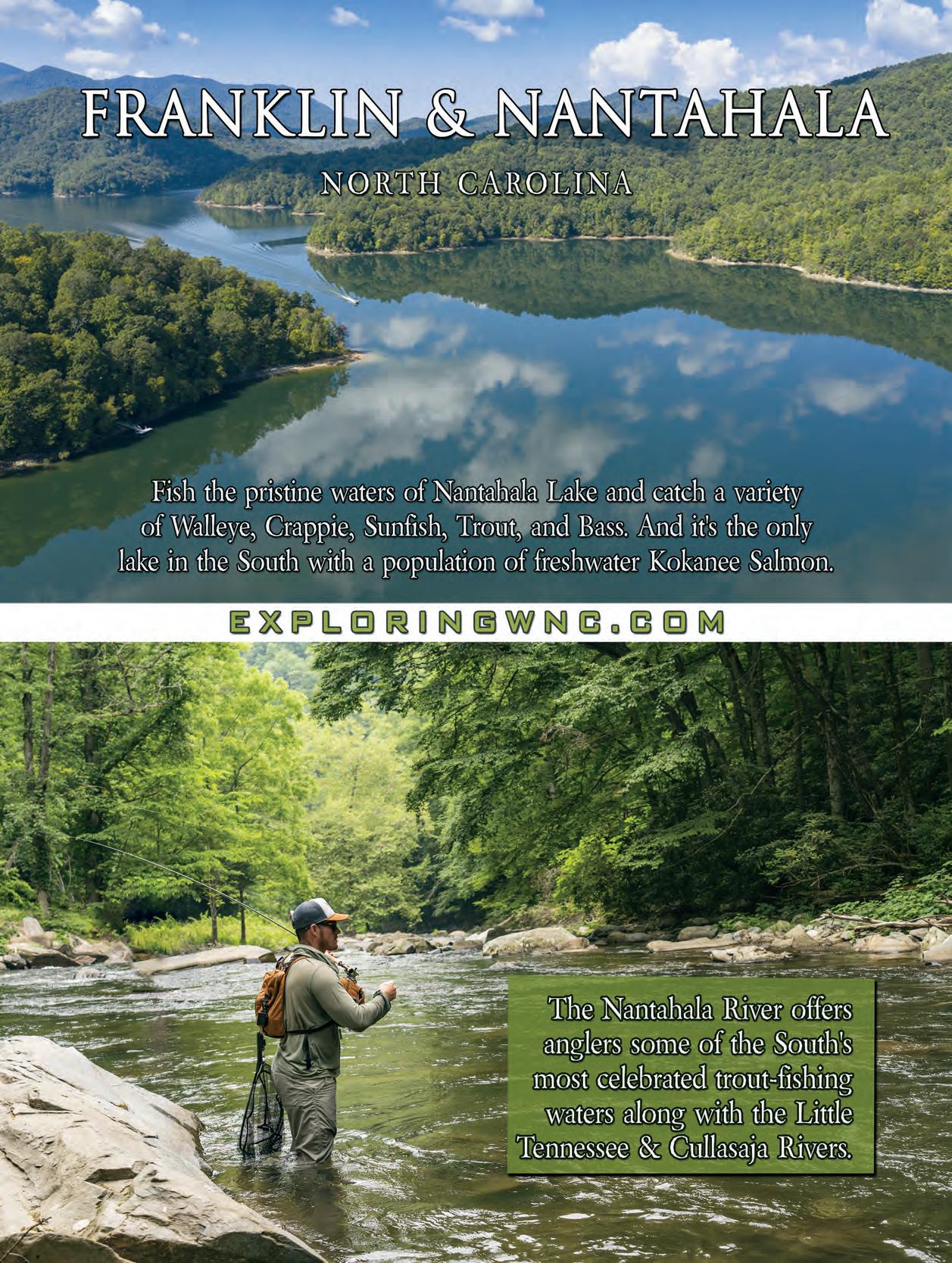

By James McManus
Holiday greetings to everyone! This time of the year is so packed with things to do there is little time to just go fishing. Ballgames, hunting, family visits, all are great things, but if you don’t sneak away occasionally you can miss some of the best fishing of the year.
We just had our first snow and for some reason that makes small mouth go crazy. Some of my best pictures from early guide days show big smallies with scattered patches of snow in the background. As I get older I am less likely to break ice at the ramp than I was fifteen years ago. Still, if the wind will lay down a little I don’t mind chipping a little ice off
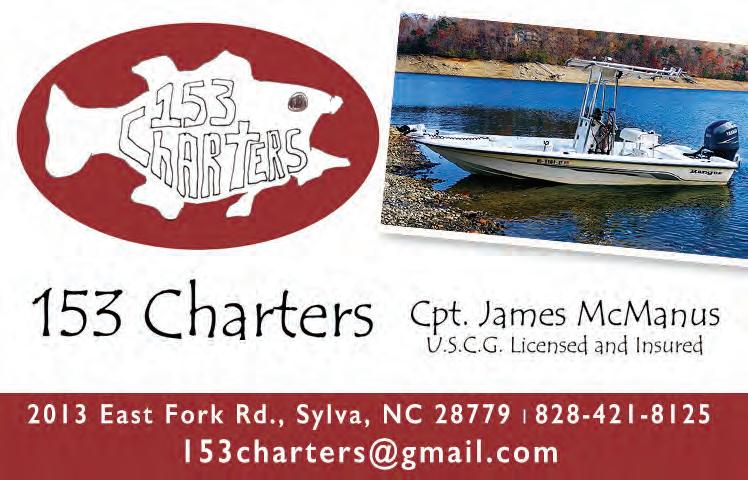
my guides every now and then. Fontana has way fewer smallies than before spots but there are still some bronze pigs out there.

Speaking of spots, they are absolutely everywhere on Fontana. We have trolled a lot for them lately and the numbers of fish at times will amaze you. While trolling I keep traditional sonar pointed below the boat and might see a couple of fish off a point. With Livescope pointed backwards, to see the trolled baits, many times the whole bottom will come up to see the baits—I’m talking fifty to a hundred fish.
Not complaining about spots, but there is way more than enough bait to support stripers in our lake. I stopped going to wildlife meetings because of the lack of willingness to listen to our requests for striper/ hybrid stocking, but think I will take up the cause at this round of meetings. At my age if I ever want to catch one here they need to get a move on. Contact your wildlife biologist and request striper stockings. The more folks who squeak, the faster the fish wheels will spin.
Well, enjoy what our Father has given us—and stay warm!
Later, Capt. James
Capt. James McManus owns 153 Charters. Give him a call for a great day on the water at (828) 421-8125
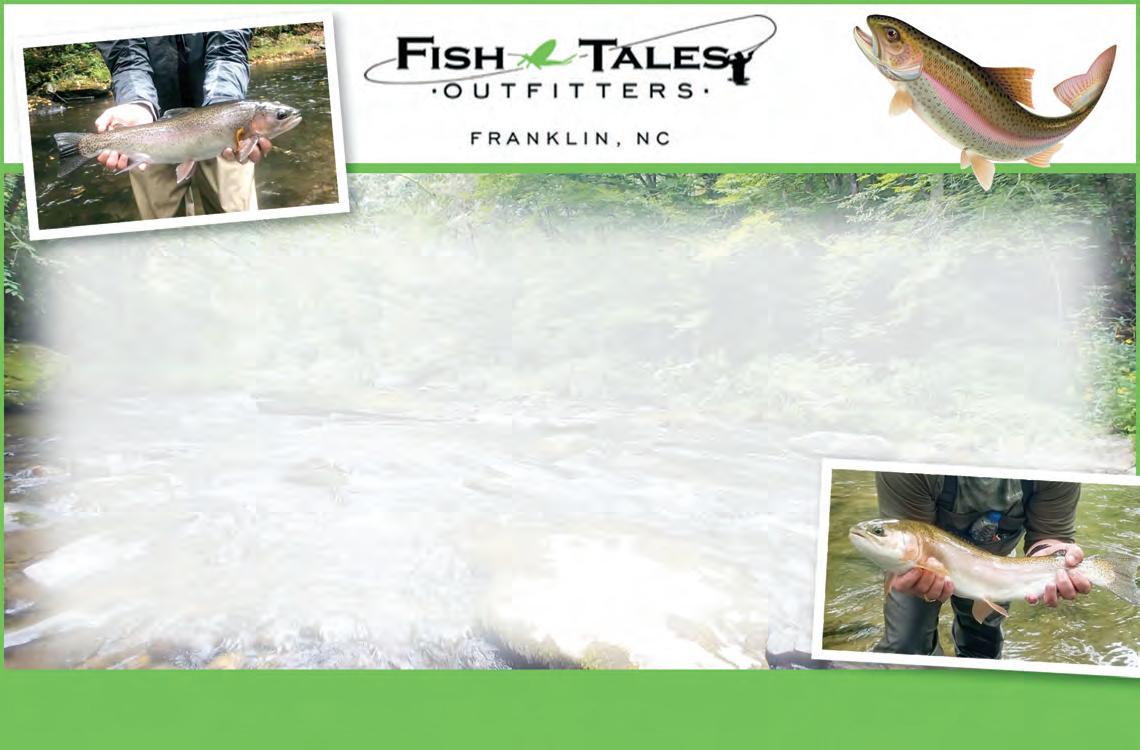



HBy Ronnie Parris
ey folks old man winter has definitely decided it’s time to visit. Some mornings, when the mercury don’t get past 20 ,it’s tempting to add more wood to the fire and get another cup or 2 of coffee. But honestly, if you prepare well for the cold, this could be the best time of the year to catch really big fish in our mountain lakes.
First and foremost, good cold weather clothing is a must. I start with a good moisture wicking base layer. Then I have one of the heated jackets that are really great, and I top it off with a good waterproof pair of coveralls. I also have a heater on my boats, but be very careful when picking a heater, as safety is paramount when out on the water. I’ve never really been able to feel subtle bites while wearing gloves, so at least I can warm my hands over the heater. Hot hands placed in a jacket pocket works well also.
As far as the fishing when it’s this cold, it’s usually great. I start the morning off searching for schools with my live scope, and usually they are more than happy to hit minnows or minnow imitations For whatever reason a crayfish crank bait works well this time of year also. You would think when the temperature plummets the fish would also but sometimes it’s the opposite. I’ve had great luck working rocky shorelines, casting to the bank, especially the sunny side where downed trees are present.
A slight water temperature difference can make all the difference, so if you’re looking and find a 2 degree change, work this area hard even if you don’t see fish. They may be planted so close to the bottom

the live scope doesn’t detect them. So many times, I’ve never seen a fish ‘til my bait got close and it rose up from the bottom to get it.
Bottom line is, it’s gonna be cold and windy, but the bite’s usually great, so suit up and get out there and enjoy what God gave us. I usually end with take a kid fishing, but this might not be a good time for the little ones. I’d wait for the warmer months to take your little fishing buddies. Stay safe friends, and God bless!
Ronnie Parris is owner and head guide of Smoky Mountain Outdoors Unlimited-Fontana Lake Fishing Guides, headquartered in Bryson City, N.C., heart of the Great Smoky Mountains, www.smokymountainoutdoorsunlimited.com; (828) 488-9711.





The Sea Eagle® Stealth Stalker™ 10 is now available with a lightweight, super portable, high pressure drop stitch oor. With this new in atable oor, the total weight of the boat is 13 pounds less than the traditional wooden oorboard. The oor rolls up with the boat making transporting and storing a breeze. The seats attach with 4 double d-ring straps for quick & easy set up. Use the STS10 with 1 or 2 anglers in bays, lakes, rivers, salt marshes - wherever the sh are.
STS10 Pro Lite Package includes everything you see below plus a storage bag for the boat, pump and repair kit. Add an electric or gas


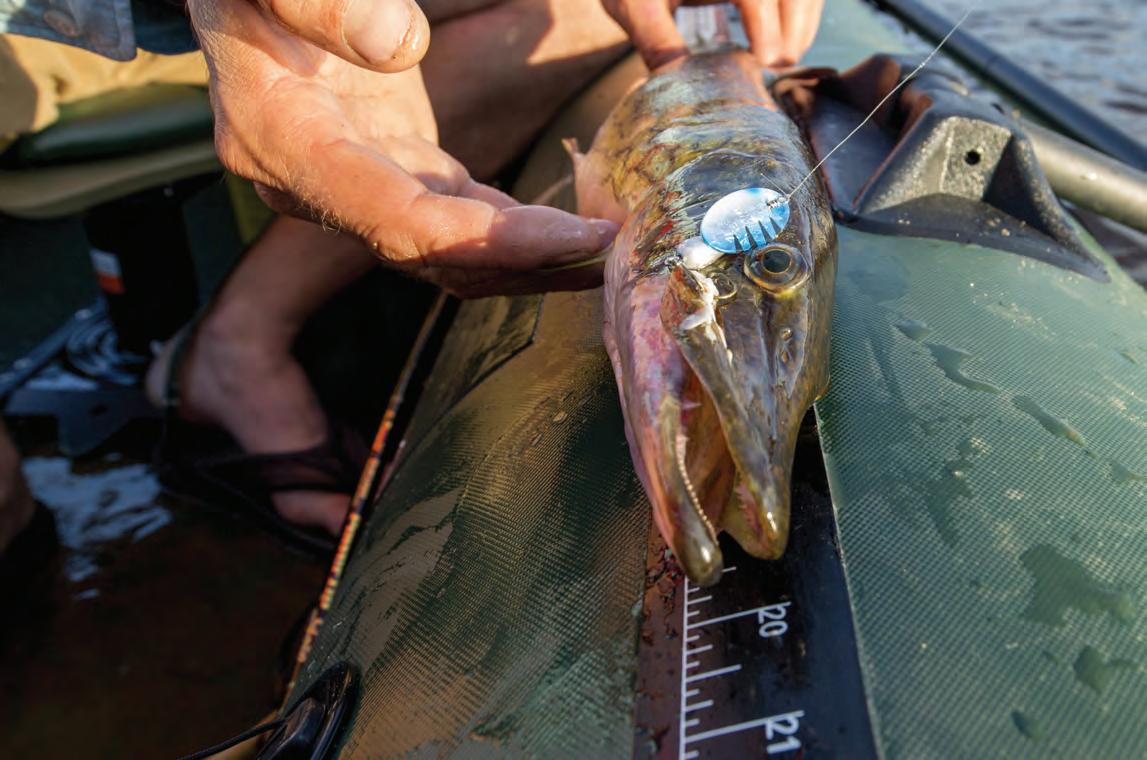

If you’re searching for an ideal holiday gi! for a woman who enjoys spending time on the water, consider Costa Del Mar’s Luna Nueva polarized sunglasses. ese women’s shades use color-enhancing 580 lens technology to reduce haze and boost contrast and clarity. Choose between glass (580G) lenses for outstanding sharpness and scratch resistance, or lightweight polycarbonate (580P) for impact protection—either option o ers a high-de nition viewing experience.
Designed with simplicity in mind, Luna Nueva makes a great companion for anglers, featuring an elegant butter y-shaped frame cra!ed from ultra-thin material. is results in one of the slimmest pro les in Costa’s collection, delivering a sophisticated and distinctive appearance. Adjustable nose pads allow custom t ensuring maximum comfort and retention. costadelmar.com/en-us/sunglasses/6S9127-198537009143









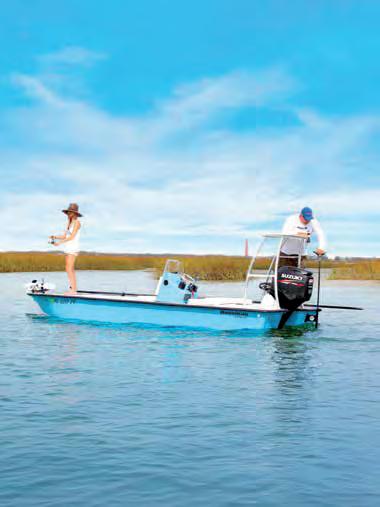













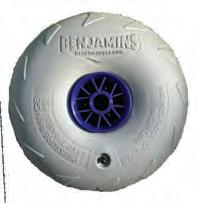



s the holidays roll around, anglers everywhere are dreaming of that perfect new piece of gear to add to their arsenal. If you are looking for a compact, fun, and travel-friendly rod this holiday season, check out micro rods from Bean Pole. e Bean Pole takes the micro rod concept to the next level. It’s compact, durable, and designed for real anglers who appreciate simplicity with performance. It’s easy to store, fun to use, and rugged enough to handle both saltwater and freshwater adventures. Perfect for impromptu casts or for those who like to keep a rod handy wherever life (or travel) takes them. ey also have a vibrant fun color!
is Holiday season, skip the ordinary gi!s and give something unforgettable, a Bean Pole. Compact, exciting, and travel-ready, it’s more than just a micro rod, it’s an invitation to adventure!
Order at www.beansport shing.com while supplies last.


CAPT. TYLER WOOLCOTT
Shopping for a bass sherman isn’t easy.

Most of us already have enough rods and tackle boxes to ll a garage, and we’re picky about every lure we throw. But that’s what makes stocking stu ers the ideal gi!s: they are small, useful gi!s that actually get used on the water.
An absolute can’t miss item is shing line. A spool of Su x line is my recommendation, whether it’s 832 braid or Advance uorocarbon. is is one of those gi!s that every bass sherman truly appreciates. It’s the kind of thing we always need but hate spending money, making it a perfect stocking surprise.
If you want to add some color and action, grab a few packs of CrushCity so! plastics. eir Bronco Bugs, Cleanup Craws, and Freeloader minnows at out catch sh, and you can’t go wrong with their proven colors. Toss a couple of those in a stocking and you will win Christmas morning.

For the gear junkies, think about tools and tackle organization. A pair of Rapala pliers, some hook removers, or one of their waterproof tackle boxes are small but mighty gi!s that make a big di erence on the water. Every angler loves having their gear dialed in, and Rapala makes stu that actually holds up. Don’t forget about gi!ing some comfort on those long, sunny days. Chums makes a ton of great accessories like sunglass retainers, oating keychains, and waterproof phone pouches. es are perfect little add-ons that make life on the boat a little easier and can save a few pair of sunglasses from sinking.
At the end of the day, the best gi!s for a bass sherman aren’t necessarily the biggest or ashiest. Instead, they’re the thoughtful, practical items that make time on the water smoother, easier, and just a little more fun. By throwing a few of these suggestions in a stocking – and maybe adding a gas station co ee card for good measure- you’re sure to have any bass angler smiling wider than a ve-pounder at weigh-in.
Happy Holidays, Y’all!
Capt. Tyler Woolcott is a professional tournament angler, as well as owner/operator of Florida Big Fish Adventures, providing bass and saltwater guided shing trips. Reach him at (386) 235-7388 and check out his website: www. oridabig shadventures.com.
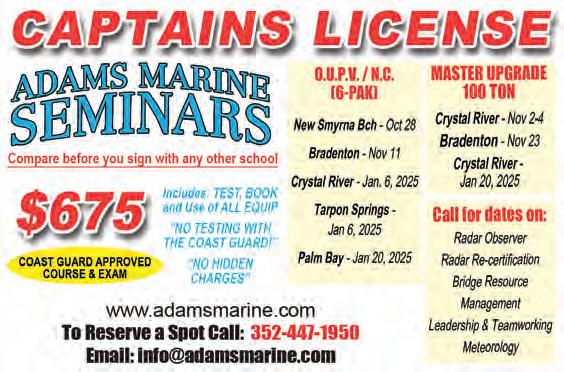














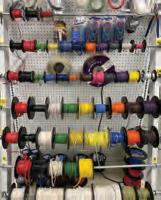

















As 2025 winds down, let’s take a minute to honor a few amazing anglers who set IGFA records this year. e International Game Fish Association (IGFA) has recognized several new 2025 world records, including a black n snapper caught by Michael McFadden o the coast of Florida, a cobia by Koby Duncan in Australia, and an Arctic char and common carp length records set by Jay Siemens and Rowan Lytle, respectively in Canada and Connecticut.

Many new U.S. records for freshwater species are also included, such as the landlocked striped bass by Pamela Moss in Georgia and the Alabama bass, also by Moss in Georgia. Some 2025 IGFA US Saltwater Records include a 27 lb. red grouper by Zachary Daniel Murray o Florida, a 31 lb. 3 oz. greater amberjack by Julia Berstein out of Key West, and a 55.9 in. great barracuda by Nick LaBadie on y tackle o Key West. ese were all certi ed and submitted to the IGFA, with the grouper and amberjack being o cial weights and the barracuda being an all-tackle length record. e IGFA is publishing its 2025 World Record Book and has also added two new species—barred sand bass and spotted sand bass—to its catch-and-release All-Tackle Length World Record Category.
Will you be among these elite anglers in 2026?
For a complete database of 2025 record holders, visit igfa.org.


(1)





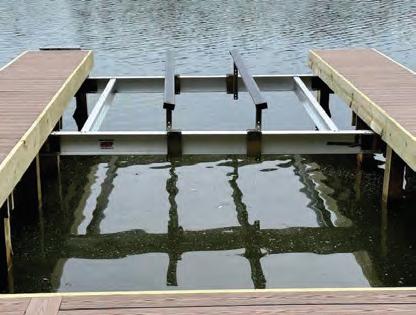




ShoreStation hydraulic boat lifts are a reliable choice for coastal residents and boating enthusiasts alike. Their strong construction, made with corrosion-resistant materials, allows them to withstand harsh environmental conditions, including sun, storms, and saltwater damage. ShoreStation provides a steadfast solution for protecting waterfront investments, o ering peace of mind to owners in the Sunshine State.
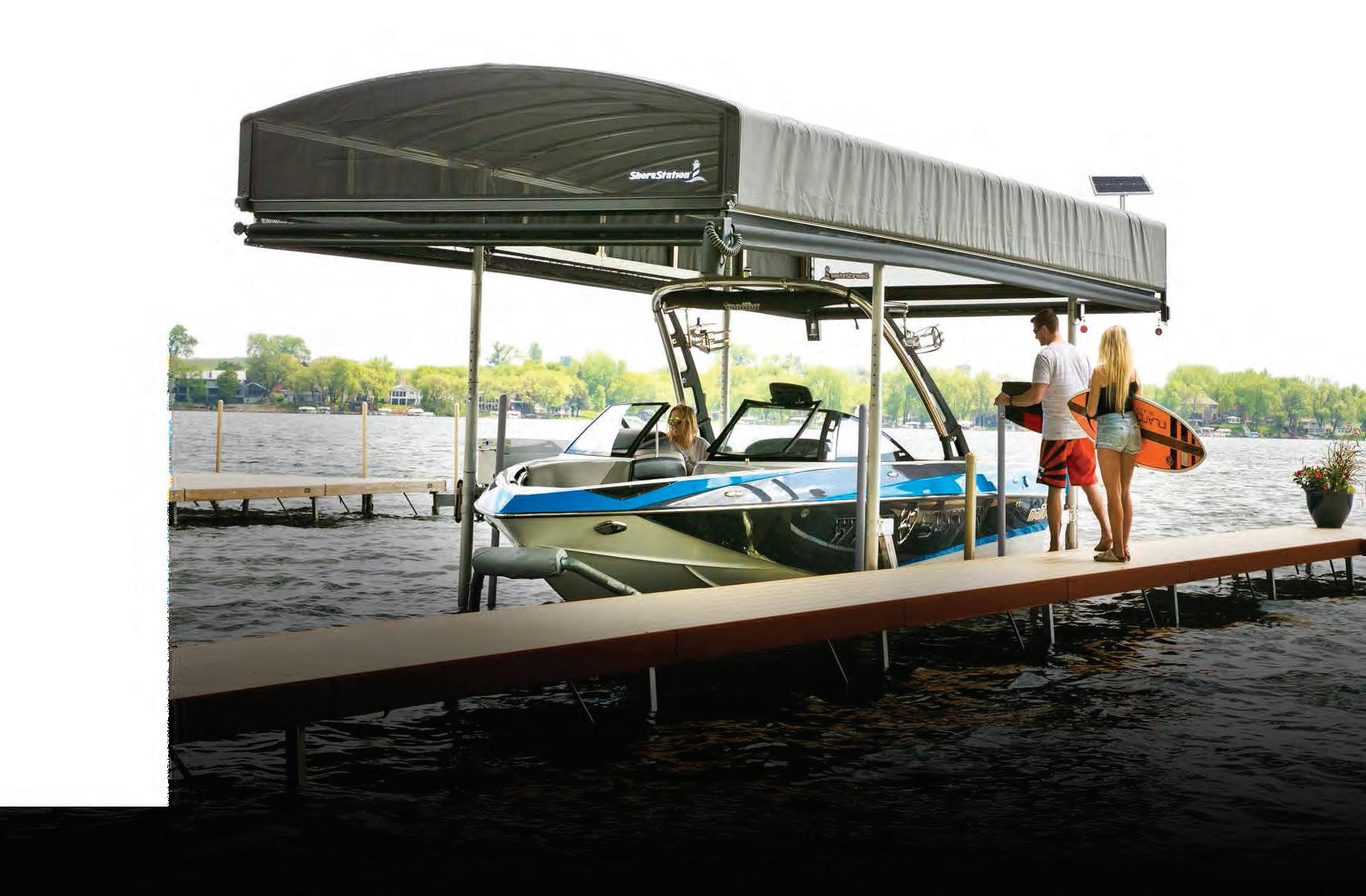







Equipped with exceptional weather resistant fabric and breathable SunTex 80 woven mesh ends for maximum protection and durability, the REVOLUTION™ Series Canopy is the most innovative canopy

Made from the highest quality materials, our innovative hydraulic boat lift is one of the fastest and safest lifts on the market today. When you have a hydraulic lift, there’s no need to worry about wind and waves getting in your way. This lift will give you con dence to safely land and secure your boat in less-than-ideal conditions.
Never miss another moment on the water. Power your lift with clean, free solar power. Our speedy 20 watt charger features solar regulator drainage protection, saving your battery from permanent damage caused by overcharging.



Nestled in the heart of the Caribbean, the US Virgin Islands embody a harmonious blend of natural beauty, cultural vibrancy, and laid-back serenity. ese islands are more than just a picturesque getaway; they are a living testament to nature’s rhythm and resilience, e ortlessly in tune with the world around them.
With no passport required for U.S. citizens, from the moment you arrive, the islands’ natural rhythm is palpable. e gentle sway of palm trees, the soothing sound of surf crashing against sandy shores, and the vibrant melodies of local music all echo the heartbeat of this tropical paradise. e islands’ lush landscapes, with their verdant hills and crystal-clear waters, mirror the steady pulse of life that sustains the local ecosystems and communities alike.
e US Virgin Islands’ environment is a symphony of biodiversity with world class shing and diving. ese natural elements are not static; they dance in harmony, in uenced by the tides, wind, and seasonal changes— further emphasizing the islands’ intrinsic rhythm. is delicate balance underscores the importance of conservation e orts, ensuring that future generations continue to experience the islands’ natural cadence.


Culturally, the US Virgin Islands are equally in tune. e music, dance and festivals re ect a vibrant heritage rooted in African, European and Caribbean traditions. e spirited calypso beats and reggae rhythms are expressions of life's ongoing dance—celebrating resilience, community and joy. ese cultural expressions are an extension of the islands’ natural rhythm, showcasing how human life here moves seamlessly with nature’s ow.
In a world o!en dictated by chaos and rapid change, the US Virgin Islands serve as a reminder of the beauty of being in sync with nature’s tempo. eir natural, cultural and ecological rhythms o er a blueprint for sustainable living and harmony. As travelers and residents alike continue to embrace this rhythm, they uphold a legacy of balance—one that celebrates life’s natural ow and the enduring spirit of these remarkable islands. In the US Virgin Islands, being in rhythm isn’t just an ideal; it’s a way of life.








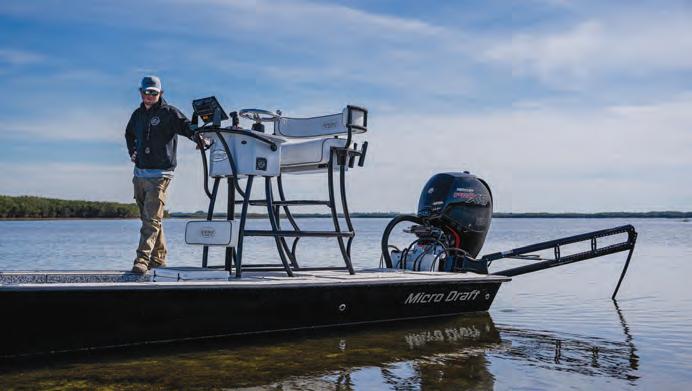



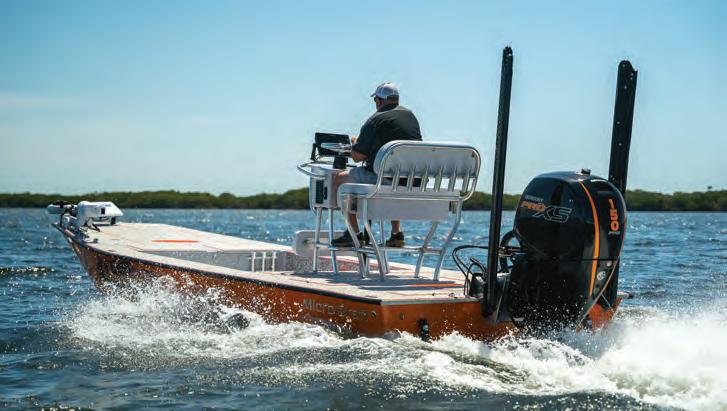

It’s no fsh tale when you run with a John Deere. You can get everything done faster and easier, so you get more time on the water. Plus, our special offers make them the catch of the day.


